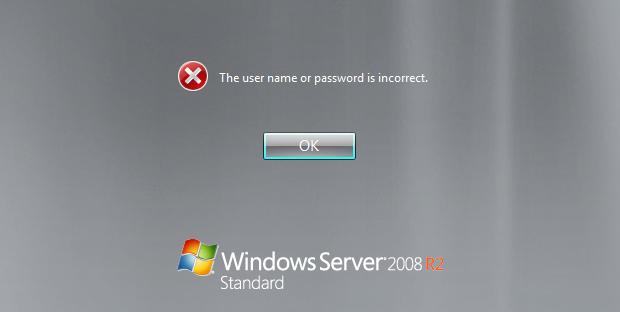
Published on December 12th, 2012 | by Kieran
71Resetting Administrator Password in Windows 2008
Being in my line of work, I make use of dozens of test servers and virtual machines and from time to time I can forget what the administrator password is. To save time, usually I would use the Offline NT Password & Registry Editor to simply reset the password. However I was told of another useful method using the Microsoft Windows Server 2008 installation DVD / ISO Image. It’s a breeze to reset the password so I thought I would share. Personally I have tried this on a standalone Windows Server 2008 R2 but it should also work with Domain Controllers for resetting domain administrator passwords.
- Boot from the Micrsoft Windows Server 2008 DVD
- From the Install Windows menu, click “Next”.
- Select “Repair your computer”
- In the System Recovery Options, select the Operating System instance that you wish to repair and click “Next”.
- Select “Command Prompt”. The
- At the command prompt, run the following commands:c:
cd windows\system32
ren Utilman.exe Utilman.exe.old
copy cmd.exe Utilman.exe - Reboot the server allowing Windows to load as normal
- At the logon screen, press Windows Key + U.
- As the command prompt, enter the following command:net user administrator Password12
This will set the password for the Administrator user to be Password12 (case sensitive).
Closing the command prompt, you should now be able to log back onto the server using the password you have provided in the last step.
Cleanup Steps
Once you have verified you can log on to the server you will have repeat the steps above and boot using the Windows Server 2008 DVD/ISO and run the command prompt again.
- Delete the newly created Utilman.exe from C:\Windows\System32
- Rename Utilman.exe.old back to Utilman.exe
You should be back up and running as if nothing ever happened.
Some Screenshots
Other Procedre
Boot to installation media and get a cmd prompt
The catch is that you have to note which drive letter is mounted. In the case below, it was D not C.
Run the following commands:copy c:\windows\system32\magnify.exe c:\windows\system32\magnify.exe.old
copy c:\windows\system32\cmd.exe c:\windows\system32\magnify.exe
copy c:\windows\system32\cmd.exe c:\windows\system32\magnify.exe
Reboot
I then selected the magnifier tool which launched cmd.exe and did the following to reset the password:
Net user %username% %password%
Note that if you check permissions with “whoami,” you’ll see:
Nt Authority\system
I then rebooted:
shutdown -r -t 10 -f -c "Password Reset" -d p:4:1
Make sure to clean up after yourself by re-copying the magnifier.exe…you’ll need to reboot and boot with the CD all over again and go to a cmd prompt to do it.
It’s possible to reset your Windows Sever 2008 / R2 Domain Controller administrator password using your installation CD.
1. Restart your Windows server 2008 DC with the installation CD
3. Select your partition and installation version and click Next
4. Click on Comm and Line Prompt
5. Change directory to the access the system 32 directory. Then your original C:drive is changed to D: or E: depending on the number of drive and partitions you have on that system.
6. Rename the file Utilman.exe to Utilman.exe.bak using the comm and Copy Utilman.exe Utilman.exe.bak.
7. Using Command Move Cmd.exe Utilman.exe to move CMD.exe file into Utilman.exe. Press O or Y to accept after that restart your Computer normaly
8. At the user logon screen, press a combination of Windows KEY+U, then the CMD.exe will appear. Type net user “Username””new password”;
Then your system Admin Password is reset. Please don’t forget to rename back Utilman. Exe ->Cmd.exe and Utilman.exe.bak-> Utilman.exe after getting back access.

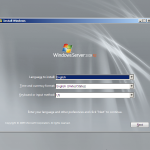
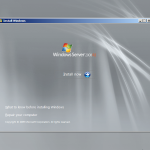

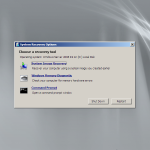
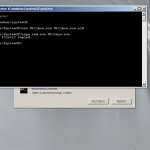
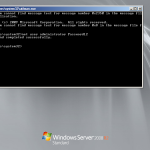
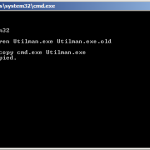
No comments:
Post a Comment